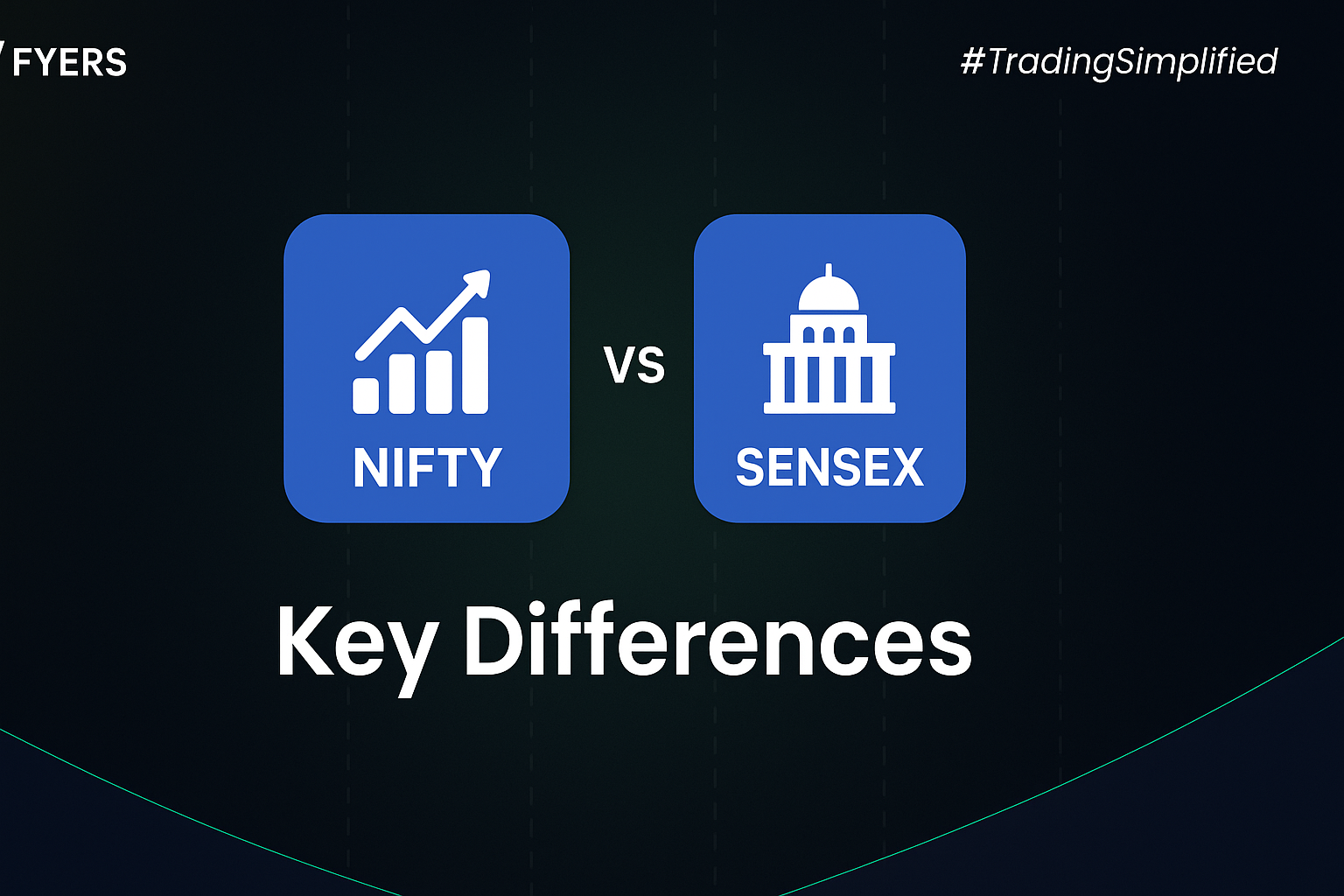

 25 Aug, 2025
25 Aug, 2025
 4 mins read
4 mins read

When people talk about the performance of the Indian stock market, two names usually come up first: Nifty and Sensex. These are the most widely tracked market indices in India, often used as a benchmark to measure how the broader market is doing. While they serve a similar purpose, there are important differences between the two that every investor should understand before making investment decisions.
Before diving into their differences, it helps to know what Sensex and Nifty actually mean.
Sensex (Sensitive Index): Launched in 1986 by the Bombay Stock Exchange (BSE), Sensex is the oldest stock market index in India. It tracks the performance of the top 30 companies listed on the BSE, chosen based on their market capitalisation, liquidity, and representation across sectors.
Nifty (National Stock Exchange Fifty): Introduced in 1996 by the National Stock Exchange (NSE), Nifty tracks the performance of 50 leading companies across different sectors. It is one of the most popular benchmarks for institutional and retail investors alike.
Both indices act as a mirror of India’s economic health and are widely used by fund managers, analysts, and traders to gauge market sentiment.
While both Sensex and Nifty are barometers of the Indian stock market, they are based on different stock exchanges.
Sensex reflects the performance of companies listed on the BSE.
Another important point is that both indices cover companies from multiple industries—banking, technology, energy, consumer goods, pharmaceuticals, and more—making them diversified indicators of India’s corporate strength.
The difference between Sensex and Nifty comes down to a few core aspects:
Sensex: 30 stocks
Nifty: 50 stocks
Sensex: Bombay Stock Exchange (BSE)
Nifty: National Stock Exchange (NSE)
Sensex: 1986
Nifty: 1996
Sensex: Represents the largest companies across sectors, but with a slightly smaller sample.
Nifty: Covers a larger pool of companies, giving a broader snapshot of the market.
In short, Sensex gives a more focused view of large-cap companies, while Nifty offers a wider representation.
One common question investors ask is: which gives better returns, Sensex or Nifty?
Historically, the returns of both indices have been quite similar because they consist of large, established companies. However, since Nifty covers more stocks, it sometimes provides a slightly broader reflection of the market.
Short-term performance: In specific years, one index may outperform the other, depending on which companies or sectors are driving growth.
For example, if banking and IT stocks lead a rally and they have higher weightage in Nifty, the Nifty might outperform Sensex for that period.
When it comes to investing, many beginners wonder: Which is better, a Sensex index fund or a Nifty index fund?
Nifty Index Fund: Invests in 50 companies, giving a broader market exposure with slightly more diversification.
Both are good choices for passive investors who want steady, market-linked returns without actively picking stocks. The choice often comes down to personal preference or which exchange you’re more comfortable tracking.
Investors track both indices because together they provide a more complete view of the Indian financial market.
Nifty offers a wider perspective by including more stocks from the NSE.
Since global investors also follow these indices, news about Sensex vs Nifty returns often influences foreign inflows and overall market sentiment.
Both Nifty and Sensex play a vital role in reflecting the direction of the Indian stock market. While they are similar in purpose, their differences—number of stocks, exchange representation, and coverage—make them unique.
For investors, choosing between Nifty vs Sensex index funds is less about which is “better” and more about which suits their preference for concentration versus diversification. Ultimately, whether you track Nifty, Sensex, or both, these indices remain indispensable tools for understanding India’s financial markets.
Sensex represents 30 top companies listed on the BSE, while Nifty tracks 50 leading companies listed on the NSE.
Over the long term, both have delivered similar returns. At times, one may outperform the other depending on sector performance.
No, you cannot invest directly in the indices. However, you can invest in index funds or exchange-traded funds (ETFs) that replicate their performance.
Both are good options. Sensex index funds are more concentrated, while Nifty index funds offer broader diversification.
Calculate your Net P&L after deducting all the charges like Tax, Brokerage, etc.
Find your required margin.
Calculate the average price you paid for a stock and determine your total cost.
Estimate your investment growth. Calculate potential returns on one-time investments.
Forecast your investment returns. Understand potential growth with regular contributions.